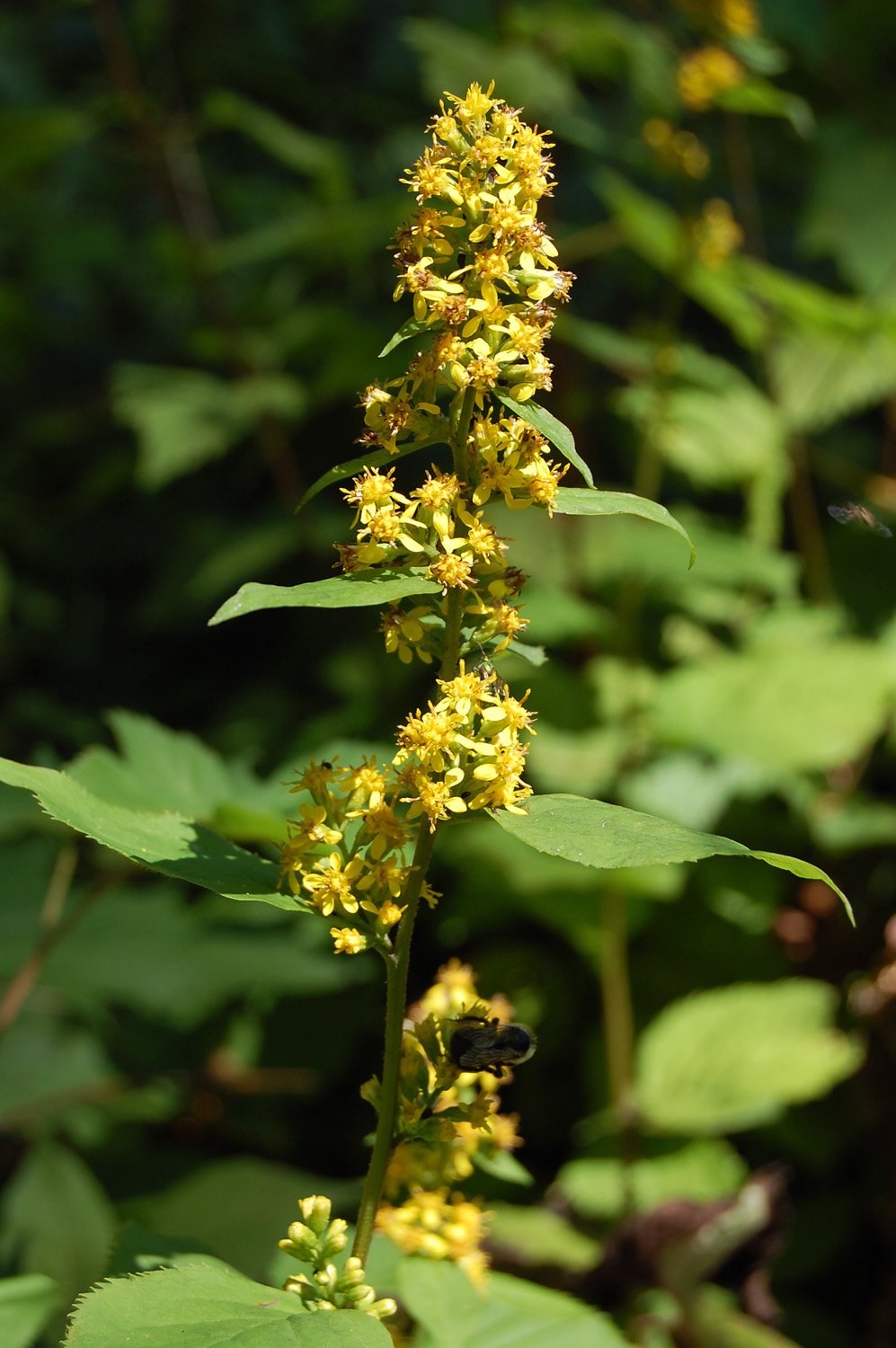Broadleaf Zigzag Goldenrod
Solidago flexicaulis
by Doris Gilbert
Zigzag goldenrod gets its name from the way the leaves and bright yellow flowers seem to "zig zag" their way up the stem. The large leaves (another common name is broadleaf goldenrod) have sharply serrated edges and turn a brilliant burgundy in the fall. Goldenrods are often wrongfully blamed for causing an allergic reaction to wind-borne pollen, but like most native wildflowers, goldenrod doesn’t have wind-borne pollen. Their pollen is quite large and sticky, allowing it to adhere to bees, butterflies, and other pollinators that help to move it around. Typically late bloomers, goldenrods are an important late nectar and pollen source when little else is blooming and monarchs are preparing for migration.Native habitats include rich deciduous woods, rocky woods, woody slopes, edges of forests, stream banks, and edges of limestone glades and cliffs.
Soil type: grows in nearly any soil
Soil moisture: very low maintenance
Sun exposure: partly sunny or shady areas
Height: 1-3 feet tall
Bloom Color: yellow
Bloom Time: July to September
Benefits: Goldenrods are a host plant for 122 species of Lepidoptera, including derelict eucosma and confused eusarca moths. The pollen and nectar attract honey bees and many types of native bees. Swamp sparrows, pine siskins, and other songbirds feast on the seeds. In the winter, small animals find shelter in the dried stalks
(Sources: mortonarb.com / leavesforwildlife.com /vplant.org / inaturalist.org, gobotany.nativeplanttrust.org)


